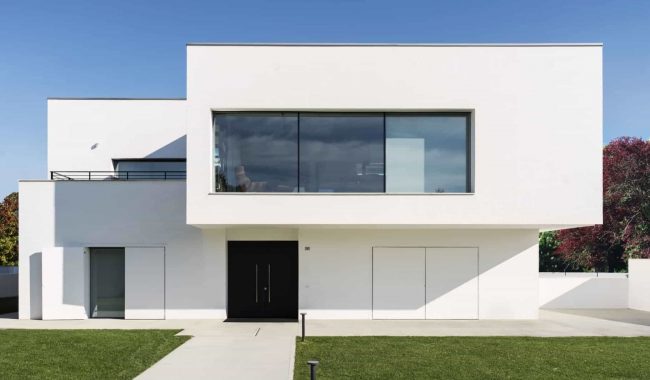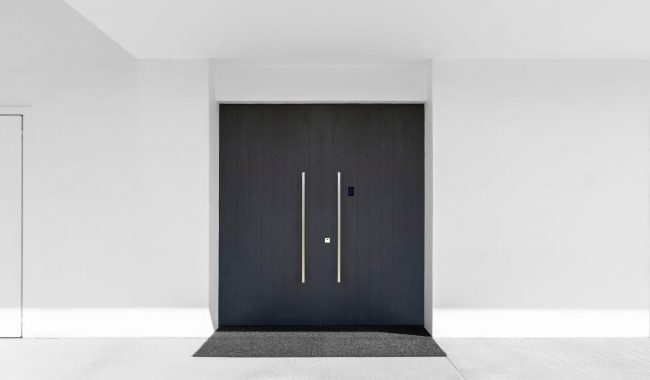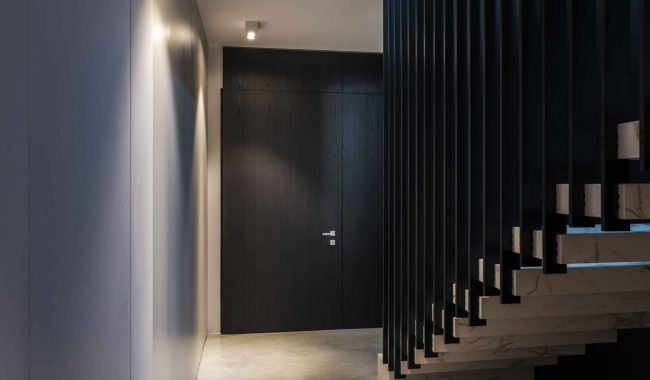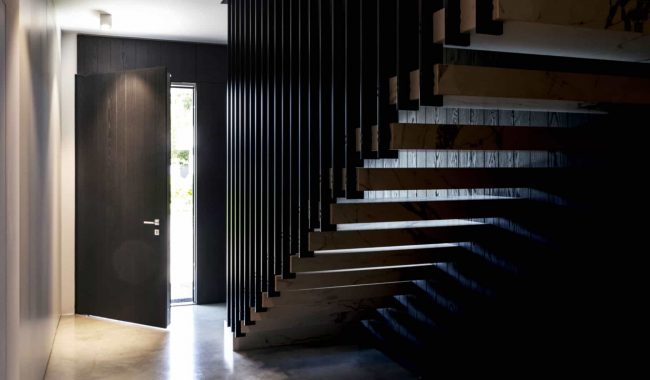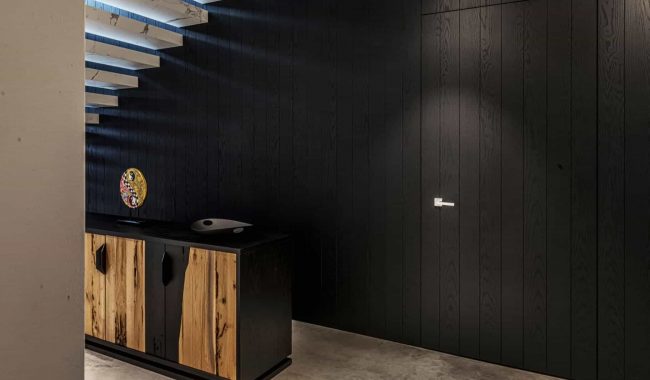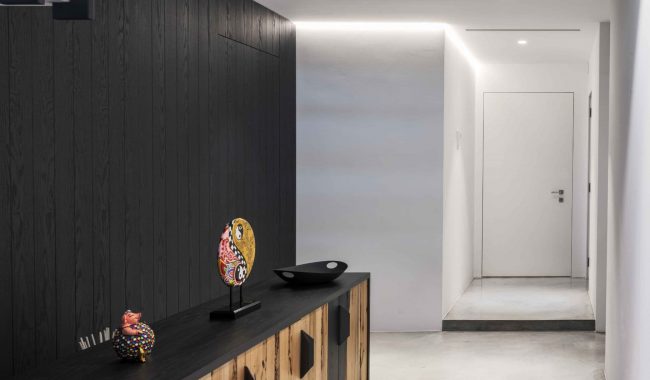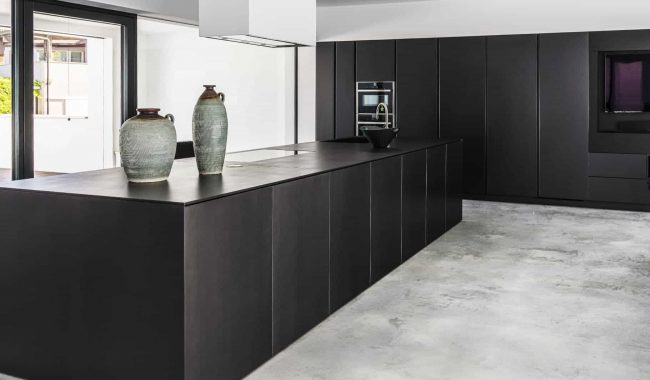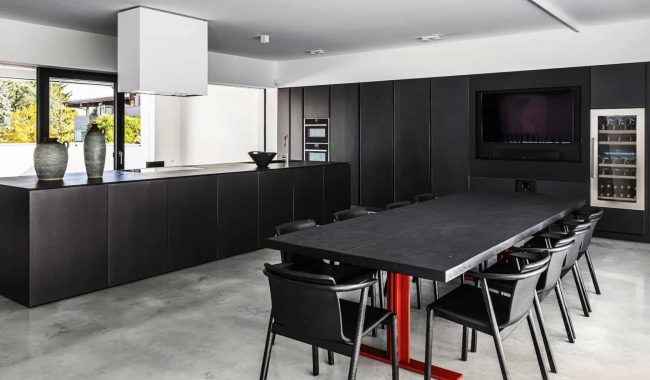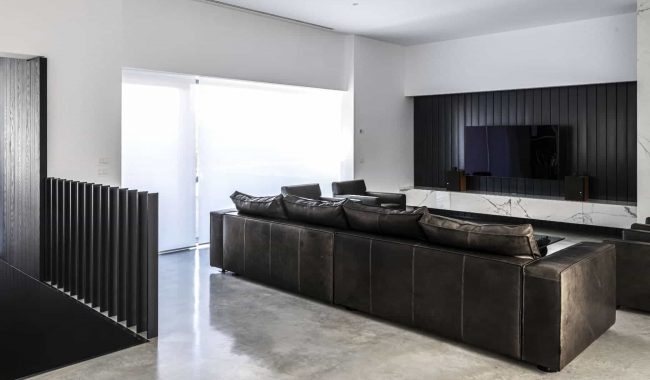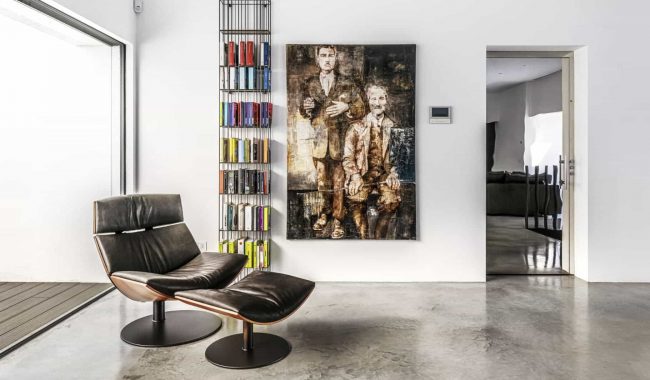The contemporary home according to Gio Pagani
Gio Pagani has chosen a modern design style where the external world and the private interior are in a coherent dialogue, also thanks to specific design solutions.
Installing top-of-the-line security doors is a solution for both the first security barrier and the privacy and inviolability of the sleeping area.”
I met Gio Pagani – Gio without an accent, like the great Gio Ponti – years ago.
His distinguishing mark was the tattoo. In the sense that the houses and interiors he went on to design were primarily a stage for telling a story, that a snap-shot of a tattoo could make the moment of a design concept able to flirt with the artistic aspect.
Other fields of reference for Gio Pagani were, and are, fashion, the beauty of the female form – often used in shooting for capsule collections and authentic decorative texts – nature in general, luxury in the sense of a unique object, working prototypes of the person brought into the third skin: the architectural design of an interior.
Clearly Pagani is not only an architect of style and “mise en scène”: his architectural path of restorations and experience abroad has fuelled his experience of signs and codes that enable him to work on interiors and exteriors in an original way. With perhaps a greater predilection for modernism and free from the adornments found in architectural volumes to then give free reign or, better said, design to richer and more personal interiors. As if the result of the Romanesque lesson belonged to him, while leaning towards the natural encroachment of eras and styles.
And certainly the play of opposites and contradictions is a preferred field of design agony for Gio Pagani.
And in architecture the theme of the threshold, of the strong, declared, manifest external universe dialogues and contrasts, in part, the intimate, semi-secret, unique interior.
That is why the threshold, the boundary, a permeable but occasionally defensive barrier also adopts a fundamental importance in some areas of a residence.
And in a continuous process of updating architects, conductors, directors (metaphors are wasted) on how to appropriately design or install apparently standard elements such as sun covers, windows and so on, must be updated and predicted from the outset.
Doors have always assumed an immense metaphorical significance: having moments ago mentioned the Romanesque, you can not forget the historiated portals of churches and palaces. Nowadays, decor does not extend that far but in a project like the three villas that Gio Pagani recently worked on, working with standard doors would not be possible.
The architect’s choice was to refer to the optimal solutions of Alias Security doors: for the entrance, that magical threshold between the two universes of interior and exterior, he chose a double security door with motorised X1R Iseo Smart lock (the capacitive keyboard, coplanar to the panel, is an exclusive Alias design).
The internal and external cladding of the door is in open-pore vertical slatted ash, in a custom black colour (the material that covers the internal wainscotting and then adopted throughout the house).
Alias’s top of the range Smart lock is controlled by a sophisticated automatic electronic system, which allows you to control access to your home remotely from your Smartphone. Simply download the free app, and in a few easy steps you can have total control of your home’s entrance.
There is no internal opening button, as it uses an anti-panic system that allows opening simply by operating the handle; and obviously the deadbolts automatically shut once the door has closed.
Under-stair storage, a secondary entrance door camouflaged in the wainscotting (selected ADI INDEX).
The flush-to-wall interior security door that disappears into the panelling represents a second almost invisible security, were it not for the handle, which opens and locks the door thanks to the Go Quick lock, a system designed by Alias specifically for the Wing door.
Text by Giorgio Tartar 
Clicca per ingrandire

